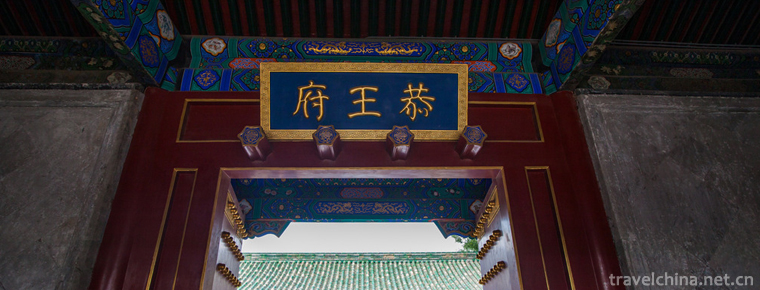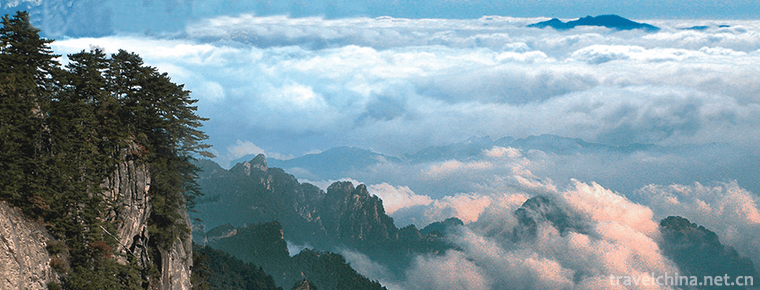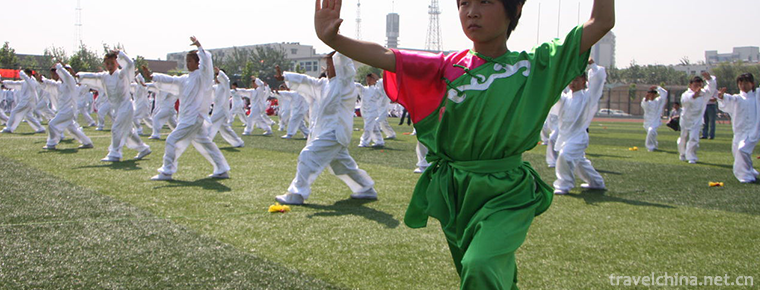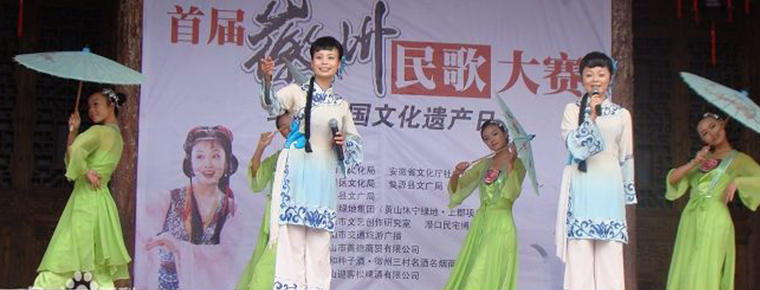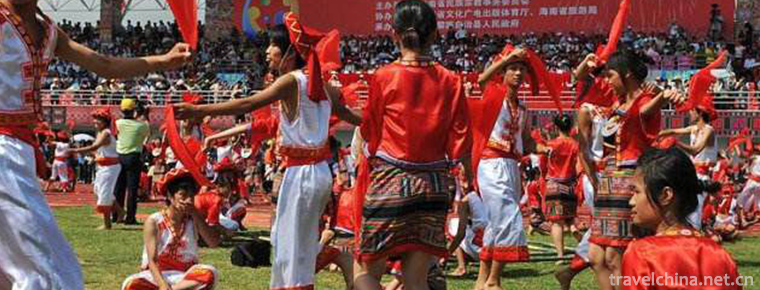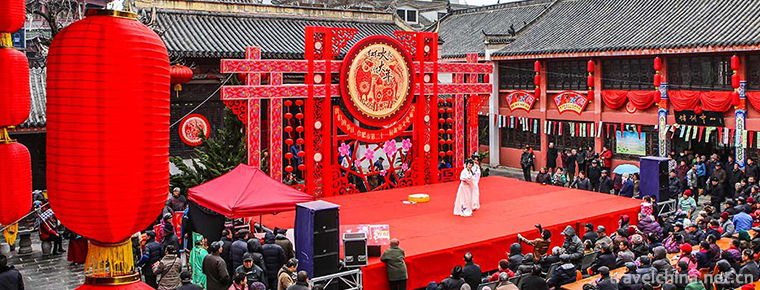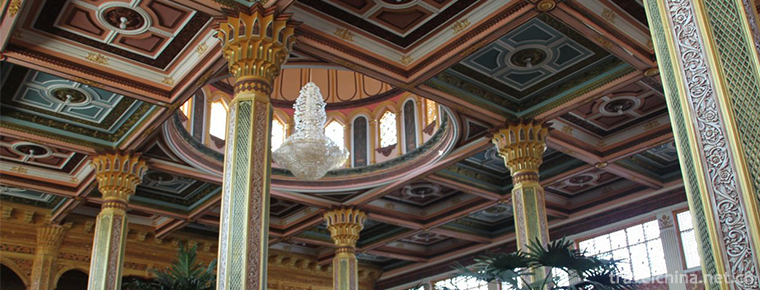Qingyang Palace
Qingyang Palace
Qingyang palace is located in the second section of the first ring road in Chengdu, Sichuan Province. It is known as "the first Taoist temple in Western Sichuan" and "the first jungle in Southwest China". It is also one of the famous Taoist temples in China.
Qingyang palace was built in the Zhou Dynasty, formerly known as qingyangsi. In the Ming Dynasty, the temples built in the Tang Dynasty were destroyed by the war. Most of the existing buildings were rebuilt from the 6th to 10th year of Kangxi reign of Qing Dynasty (1667-1671), covering an area of 120000 square meters.
The main buildings of Qingyang palace include the mountain gate, Sanqing hall, Tang Palace, etc. The palace Hunyuan hall is tall and majestic. The eight trigrams Pavilion is one of the most complete and magnificent buildings. It worships the statue of Laozi riding a green ox. The most valuable cultural relic of Qingyang palace is the collection of Taoist Scriptures, which is the most complete version in the world and has become a precious material for the study of Taoism.
Qingyang palace is a national key Taoist temple and a key cultural relic protection unit in Sichuan Province.
Historical evolution
Qingyang palace, formerly known as qingyangsi, was built in the Zhou Dynasty.
In the middle and first year of Tang Dynasty (881 A.D.), Huangchao uprising, Tang Yuzong took refuge in the middle of Sichuan, and used it as a palace. In the third year of Zhonghe period (883 AD), the imperial edict was changed to Qingyang palace.
It was renamed "Qingyang Temple" in the Five Dynasties and renamed "Qingyang Palace" in Song Dynasty.
In the Ming Dynasty, the temple built in Tang Dynasty was destroyed by the natural disaster soldiers, which was destroyed severely, and it was no longer prosperous in Tang and Song dynasties.
The existing buildings were rebuilt and restored successively from the 6th to 10th year of Kangxi reign of Qing Dynasty (1667-1671).
In 1966, when the "Cultural Revolution" broke out, Qingyang palace was shocked, and the Taoists in the palace were expelled and ordered to return to the secular world. After the reform and opening up, it has been repaired many times.
In 1984, Zhang Yuanhe of Qingyang palace and Taoist priest reached an agreement with Sichuan Bashu publishing house to jointly reprint the collection of Taoist collections. So that the only surviving Qing Dynasty block printed edition of "daocang Jiyao" was reprinted.
On April 9, 1983, Qingyang palace was determined by the State Council as a national key Taoist temple in the Han area.
On December 27, 2002, Qingyang palace was announced as the key cultural relics protection unit in Sichuan Province.
On June 10, 2004, in order to protect the bronze Qingyang presented by Prime Minister Zhang penghe of Qing Dynasty, it has been preserved in Qingyang palace as a cultural relic. At 10:30 a.m. on June 9, 2004, the imitation copper sheep was inaugurated for believers to touch.
architectural composition
Qingyang Palace used to cover an area of 150 mu, and more than 300 mu was rebuilt in the early Qing Dynasty. The existing temples and houses cover an area of more than 4800 square meters. The buildings are neat. The main buildings are divided into six parts and are all built on one central axis. The main buildings include the mountain gate, the Hunyuan hall, the eight trigrams Pavilion, the Sanqing hall, the Doumu hall, the Zijin platform, the Shengsheng platform and the Shutai, etc. On the west side of the gate is a eight character wall, 20 meters long and 4 meters high.
The first Hall of Qingyang palace is lingzu hall, which covers an area of 400 square meters and is about 20 meters high. The glazed tiles on the top of the wall are white petals and red glazed lotus flowers in the center. On the right is a statue of the God of earth and a statue of a green dragon. The stele of huangen Jiulong was built in the winter of Zhengde in the Ming Dynasty. Hunyuan hall, the second major Hall of Qingyang palace, was rebuilt in the reign of Guangxu. There are 26 stone pillars and 2 wooden pillars with exquisite carved carvings. The designs include deer, Phoenix watching the moon, and two lions playing ball, which are vivid and flexible. The eight trigrams Pavilion is located between Sanqing hall and Hunyuan hall. The stone base of the pavilion is divided into three layers, which are square, octagonal and circular in order to fit in with the Taoist heaven, yin and Yang, and eight trigrams. After Sanqing hall is the only original Ming Dynasty building in Qingyang palace, Doumu hall, which is made of wood. The last important group of buildings in Qingyang palace complex is Houyuan Santai, with "Shengsheng platform" on the left, "Shuotai" on the right, and Zijin platform (also known as "Tang Wang Dian", which contains images of Li Yuan and Li Shimin).
Main attractions
Mountain Gate
The original gate of Qingyang palace was built in Ming Dynasty. On the left is a statue of the God of earth and a statue of a green dragon. There is also a stele of huangen Jiulong built in the winter of Zhengde in the Ming Dynasty. On the right is a statue of a white tiger and a seven star stake, on which is engraved the cloud seal script of heaven script, which is the secret legend of Taoism. According to the layout of Zhongtian Beidou seven stars, it is called Beidou Seven Star stake. There are also dragon and Phoenix piles, a pair of big stone lions and a Dragon King well.
Now the new mountain gate is solemn and grand, overlapping cornices. The dragon and tiger auspicious animals are inlaid on the cornice pilaster, with delicate carving and elegant shape. On the top of the hall, there are two dragons playing for the Pearl.
The golden plaque "Qingyang Palace" is suspended above the mountain gate. This plaque is written in ink by an Hongde, the magistrate of Huayang County, Chengdu in the Qianlong period of Qing Dynasty. It is a cultural relic of Qingyang palace.
Sanqing Hall
Sanqing hall, also known as Wuji hall, is the main hall of Qingyang palace. It was built in the Tang Dynasty and rebuilt in the eighth year of Kangxi reign of Qing Dynasty (1669 A.D.). The base of Sanqing hall is 40 meters long and square, with a total area of 1600 square meters. On the outer eaves pillars are carved artistic wood carvings such as Liuhe tonger and Shuangshi playing ball. There is a gold couplet: "the heaven lies on the green ox stone chamber, the smoke is eternal, the white crane and the pot are hanging in the cave for thousands of years" (written by Li Yuhang, former president of China Taoist Association). In front of the hall, a bell named "Youming bell" was cast in the Ming Dynasty, weighing more than 3000 kg. Right with a drum, every day on the first day, the fifteenth day and the auspicious ceremony will beat the drum bell.
There are 36 pillars in the hall, including eight wooden pillars, representing the eight heavenly kings of Taoism; and twenty-eight stone pillars representing twenty-eight stars in the sky, namely horn, Kang, Di, Fang, Xin, Wei, Nu, Xu, Wei, Shi, Bi, Bi, Shen, Jing, GUI, Liu, Xing, Zhang, Ji, Dan. The building of this hall is grand and solemn.
Sanqing hall is dedicated to the supreme god of Taoism Sanqing, namely Yuqing Yuanshi Tianzun, Shangqing Lingbao Tianzun, Taiqing moral Tianzun, also known as taishanglaojun and taishangdaozu. There are also twelve golden immortals on both sides of the hall: guangchengzi, Chishen, Huanglong immortal, jiliusun, Taiyi, dengdeng, Guangfa Tianzun, Puxian immortal, Cihang Taoist, Yuding immortal, daoxingtianzun, Qingxu daozhenjun.
In front of Sanqing hall, there are two bronze cast Qingyang, which are the treasures of Qingyang palace. On the left is single horn Qingyang and on the right is double horn Qingyang. The single horn sheep contains the characteristics of the twelve zodiac animals, including mouse ear, ox body, tiger's paw, rabbit's back, Longjiao, snake tail, horse's mouth, sheep's beard, monkey's head, chicken's eye, dog's belly and pig's buttocks. Single horn Qingyang was donated by Zhang penghe, a Bachelor of Qing Dynasty in the first year of Yongzheng. Shuangjiao Qingyang was donated by Zhang kesiyan, a Chengdu believer, in the ninth year of Daoguang. According to the inscription on the base, the inscription says: "Tongyang, Shangde, capital city, moved to Chengdu ancient Daochang. Yin Xi seems to know each other. Find Huayang yueweiyang. " Xinyangzi is the name of Zhang penghe.
Hunyuan Hall
The Hunyuan hall is the second major Hall of Qingyang palace. It is dedicated to the supreme god of Taoism, one of the supreme deities of Sanqing, namely, the supreme emperor. The Hunyuan hall was rebuilt in the reign of Emperor Guangxu of the Qing Dynasty, covering an area of 616 square meters. There are 26 stone pillars and 2 wooden pillars. Carved on the column are hollow deer and Phoenix looking at the moon. The image is vivid and lively. In the Song Dynasty, Zhenzong worshipped Taoism and worshipped the supreme emperor Laojun as Hunyuan God. In the center of the hall is the "Hunyuan ancestor". The old gentleman has a kind face and holds the Hunyuan heaven and earth circle. Stretching the circle is the word "one", so it shows that the origin of the world is still in a state of chaos, while Laojun made a pioneering effort to make "Tao generate one, one life two, two generate three, and three generate all things.". The back hall is dedicated to the "Cihang Zhenren", which is called "Avalokitesvara" in Buddhism.
Bagua Pavilion
Located between Sanqing hall and Hunyuan hall, the eight trigrams Pavilion is a landmark building, which embodies the characteristics of Taoism. The eight trigrams Pavilion is about 20 meters high and 17 meters wide, covering an area of nearly 300 square meters. It is compact in layout, exquisite and generous. The whole building has three floors. It is built on a heavy platform. The stone base of the pavilion is square, and the pavilion body is round, which symbolizes the ancient round place. The double cornices and kissing lips are surrounded by tortoise grain doors and cloud flower carved windows. The south facing main gate is the relief of the twelve zodiac Taiji diagram, with an ancient and simple style Ya. The whole pavilion is made of wood and stone, connected with each other by tenons, without a wedge or bolt.
The two floors on the balustrade are octagonal. Every cornice is carved with lions, elephants, tigers and leopards. All kinds of animals are inlaid in the cocked corners of Xiongzhi. The roof is yellow, green and purple glazed tiles. The lotus petals on the roof set off the unique style of the glazed gourd tripod. It is about 3.6 meters high, beautiful and spectacular. There are 16 stone pillars with double row supporting eaves. They are all chiseled by huge stones. They are about 4.8 meters high and about 50 centimeters in diameter. Among them, there are eight stone pillars with external eaves and eight carved hollow rolling dragon holding pillars.
Doumu Hall
Doumu hall, also known as Yuanchen hall, is about 10 meters long and 9 meters wide. It was built in the Ming Dynasty and was built at the bottom of the building. Doumu, worshipped in the hall, is fully known as the Mahatma of Mori heaven, congenitally Doumu Yuanjun. She is one of the great goddesses worshipped in Taoism and also the leader of the star king originally appointed by the sixty year old Taisui. According to daoshu, her name is Madame Ziguang, and she has nine sons, namely, Yuhuang, Ziwei, greedy wolf, Tumen, Lucun, Wenqu, Lianzhen, Wuqu and breaking the army. Doumu has three eyes on her forehead, four on her shoulder, and four arms on her left and right. She is a goddess with three eyes, four heads and eight arms. The statue is a kind-hearted one. According to the book of the late lecture of the supreme emperor Xuanmen, it is said that "the spirit is present in the world, and Wei Sheng is in Yanfu. If it is difficult for all living beings to be named as famous, the great master should seek the voice to save the suffering.". Therefore, Doumu is also a God in charge of life and death.
On the right side of Doumu is the queen mother of Xi, the head of female immortals, known as the queen mother. Tao Shu said: "heaven and earth, three realms and ten sides, women ascend immortals to get the Tao, Xiansuo Yan." It is said that this day is the birthday of the queen mother, and all kinds of immortals will come to celebrate her birthday. On the left is the local emperor, who is in charge of the birth of yin and Yang, the spirit of all things and the beauty of mountains and rivers. It is said in daoshu that "Chengtian follows the example of houdeguang Tiansheng, the empress of the earth emperor", which is also known as the "Mother Earth". On both sides, there are six stars of the South dipper, the longevity star of the Antarctic, and the seven stars of the Big Dipper. Doumu hall is the only existing Ming Dynasty original building of Qingyang palace.
Jade Emperor Hall
Yuhuang hall is located behind the huge screen wall of "Fu, Lu, Shou" in Doumu hall. The original Hall of the Jade Emperor hall was built during the reign of Emperor Daoguang in the Qing Dynasty (1821-1850 A.D.), but was later demolished due to dangerous buildings. The new hall was built in 1995 with a floor structure of about 18 meters long and 6 meters wide. The Jade Emperor is worshipped on the upper floor of the hall. The Jade Emperor is the god worshipped by Taoism, which is second only to Sanqing. Downstairs in front of the worship of the three official emperor, after the four imperial worship of the North Pole emperor Zhongtian Ziwei and Zhenwu Great Emperor (namely Xuantian God).
Cultural legend
The word "Qingyang" comes from Qingyang street, which in turn originates from Qingyang palace.
Tang Le Peng GUI's inscription on Qingyang palace in Xichuan said: "the emperor's children were appointed by xianbo of Taiqing, and sheep were transformed into Shu." The title of Han Yangxiong's book "the book of the king of Shu" also says: "Laozi wrote the Tao Te Ching for Guan Ling Yin, and said goodbye:" after a thousand days, I'll look for me in qingyangsi, Chengdu. ". Three years later, Lao Tzu came here, and Yin Xi came as promised. Lao Tzu revealed the Dharma and sat on the lotus platform. Yin Xi played the Daoism. Since then, Qingyang temple has become a sacred place for gods to gather and Laozi to preach. By the Tang Dynasty, the scale of Qingyang temple was quite large.
In the first year of the middle period (881 A.D.), Tang Dynasty also settled in Guanzhong to avoid the chaos of yellow nest. According to records, in the view, red light such as a blanket (ball) into the ground, dug a jade brick, engraved with the ancient seal text: "taishangping neutralization disaster.". The discovery of ancient seal jade books bricks and stones was regarded as a symbol of auspicious heaven. Later, he returned to Chang'an, believing that he was the supreme god of Taoism, the ancestor of the Sanqing Dynasty, the emperor of the Qing Dynasty, the emperor of the supreme emperor of the supreme heaven of Taiqing, who was the grace of the emperor of the supreme emperor of the supreme government of the Taoism. He gave the money of 2 million yuan for the internal and external Treasury. The hall was built in the grand hall and the temple was changed to "Temple". The grand pattern of Qingyang palace was formed at that time. After the palace view was completed, the report was xiangshengji. "Cuiwei, Gaofu, open building, the palace of Yuanqiao in Qidong Ming, the palace of anti Western polarization, the spiritual power of sword Pavilion, and the elegance of Emei, are half in the capital," said the inscription of Qingyang palace in Xichuan by the Tang Lepeng turtle. Smoke sticks to the green altar, and the wind goes clear and Qing Qing. " In this way, Qingyang palace became the largest and most influential palace view in Sichuan at the end of Tang Dynasty.
According to the "inscription on the restoration of Qingyang Palace" in the early years of Kangxi in the Qing Dynasty, it is said that Laozi rode a green ox through Hangu pass for the pass. Today, Yin Xi talks about Tao Te Ching. In the middle of it, Laozi has something to go and says to Yin XI: "zixingdao will find me in qingyangsi, Chengdu after a thousand days.". Thousands of days later, Laozi came here as promised and continued to preach to Yin Xi. The inscription on the rebuilt stele in Jiaqing also said: "there is Qingyang in Sichuan, which is the Laozi, and Zhang Daoling is here." Because of these records, later generations will understand that the word "Qingyang" came from the founder of Taoism in Han Dynasty and Zhang Daoling.
Cultural relics
Taoist Scripture Edition
There are more than 13000 pieces of the scripture edition of daozang Jiyao, which was engraved in the 32nd year of the Guangxu reign of the Qing Dynasty (AD 1906). All of them are carved with pear wood. Each block is carved on both sides. The layout is clear and the handwriting is neat. It is the most complete preservation board of Chinese Taoist classics, and it is a very precious historical relic of Taoism. In 1984, Chengdu Taoist Association and Bashu publishing house jointly reprinted 100 copies of daozang Jiyao, which are precious historical materials for the study of Taoism at home and abroad.
Mongolian holy stele of Baspa
It was unearthed in 1941 at the old South Gate of Chengdu. The original inscription, on which the two characters of the script "holy decree" can be seen. The excavation will soon be destroyed. The existing remains of the monument are about one fifth of the original monument, 0.64 meters high, 1.28M wide and 0.29 meters thick. On the one hand, it is Ba Si Ba Wen, and on the other hand is Chinese. It is the imperial edict monument of Qingyang palace in the second year of Emperor Shun of Yuan Dynasty (1342 A.D.), in which there is "the favorite Xi Qingyang palace of the holy Dynasty", and the remains are now hidden in the Museum of Sichuan Province.
Previous presiders
Real Yu Taiyuan
Taoist priest Zhang Qingye
Taoist priest Wang yicui
Wang Yangqi Taoist priest
Taoist Tao Laiyu
Taoist priest Qin fuming
Taoist priest Wang Jingxin
Taoist priest Qin Hexing
Taoist Bao Hexing
Taoist priest Chen Jiaozhong
Taoist priest Liu jiaobin
Taoist priest Zhao Yong'an
Taoist priest Chen Yongdong
Taoist priest of Huayong Bridge
Taoist priest Xiang Yuanli
Taoist priest Li Xingru
Zhang Yuan and Taoist priest
Taoist priest Chen Mingchang (current)
Temple activities
Huachao Festival (February 25th of the lunar calendar): it is not only the traditional temple fair day of Qingyang palace, but also the "flower fair" day with a long history in Qingyang palace. At that time, there are lots of cigarettes and chimes in the palace, and the people are like the tide. All kinds of famous flowers and flowers outside the palace compete with each other, flowing fragrance and color. People come and go, and the traffic is busy.
Double Ninth Festival: Qingyang palace will hold autumn chrysanthemum and frost pride activities on the eight trigrams Pavilion.
Travel Tips
traffic
Bus routes: buses 5, 17, 22, 25, 27, 42, 46, 58, 82, 301 can arrive.
admission ticket
Since 2008, the price of Qingyang palace tickets is: 10 yuan / person (5 yuan / person before 2008). Students are 5 yuan, aged over 60 and children under 1.2m are free of charge.

-
The Prince Gongs Mansion
Liu Yin Street, Xicheng District, Beijing, China.
Views: 212 Time 2018-10-12 -
Baiyunshan National Forest Park Luoyang
Baiyunshan National Forest Park is located in the primitive forest area of Funiu Mountain in the southwest of Songxian County, Luoyang City, Henan Province, with a total area of 168 square kilometers.
Views: 190 Time 2019-02-06 -
suyukou national forest park
Suyukou National Forest Park is located in Helan Mountain National Nature Reserve, 50 kilometers northwest of Yinchuan City, capital of Ningxia. It is a national 4A-level tourist attraction..
Views: 161 Time 2019-02-13 -
Cangzhou Wushu
Cangzhou people have been known for their simplicity, integrity, diligence and bravery since ancient times. Because of the relationship between geography and historical conditions.
Views: 153 Time 2019-04-04 -
Huizhou folk songs
Huizhou folk song is an ancient traditional folk art in Huizhou area. It is rich in content and diverse in genres, including chants, folk songs, minors, Buddhist and Taoist songs,.
Views: 420 Time 2019-05-04 -
March 3rd Festival of Li Nationality
The third day of March (the third day of the third month of the third lunar month) is the grandest traditional folk festival of the Li people in Hainan Province. It is also a beautiful day for the you.
Views: 198 Time 2019-05-12 -
temple fair
Temple fair, also known as "temple market" or "festival venue". It is a Chinese folk religion and the custom of the age. It is usually held on the Lunar New Year, the Lantern Festi.
Views: 214 Time 2019-06-05 -
Ping Tan drama
Pingjiao Opera is a kind of high-pitched opera that sings opera and prose in local dialect. It is a unique local opera in Fujian Province. It was formed in the early Qing Dynasty, originated in Pingna.
Views: 124 Time 2019-06-09 -
Uygur Residential Architecture Skills Aiwan Sailai Residential Construction Skills
Uygur Aiwan Sailai dwellings are mainly distributed in towns and villages along the desert edge of the Tarim Basin, especially in Yutian, Moyu, Minfeng, Pishan, Hetian, Shache and Kashgar along the so.
Views: 291 Time 2019-06-26 -
Xiling Snow Mountain
Xiling Snow Mountain, located in Dayi County, Chengdu City, Sichuan Province, is only 95 kilometers away from Chengdu, with a total area of 483 square kilometers. It is a world natural heritage, giant panda habitat, AAAA tourist attraction and national key scenic spot..
Views: 322 Time 2020-11-06 -
Thousand Buddha Cliffside Sculptures
Qianfo cliff, located 4 kilometers north of Guangyuan City, on the East Bank of Jialing River and on the ancient Shu Road of Jinniu, has a long history and exquisite carving skills. The grottoes began in the late Northern Wei Dynasty, flourished in the Tang Dynasty and ended in the Qing Dynasty. After thousands of years.
Views: 340 Time 2020-11-08 -
Hydrology in Yibin
The water system in Yibin belongs to the external water system, with the Yangtze River as the main vein, with many rivers, high density and abundant water. Jinsha River and Minjiang River join to form the Yangtze River, which runs through the nor.
Views: 323 Time 2020-12-18
